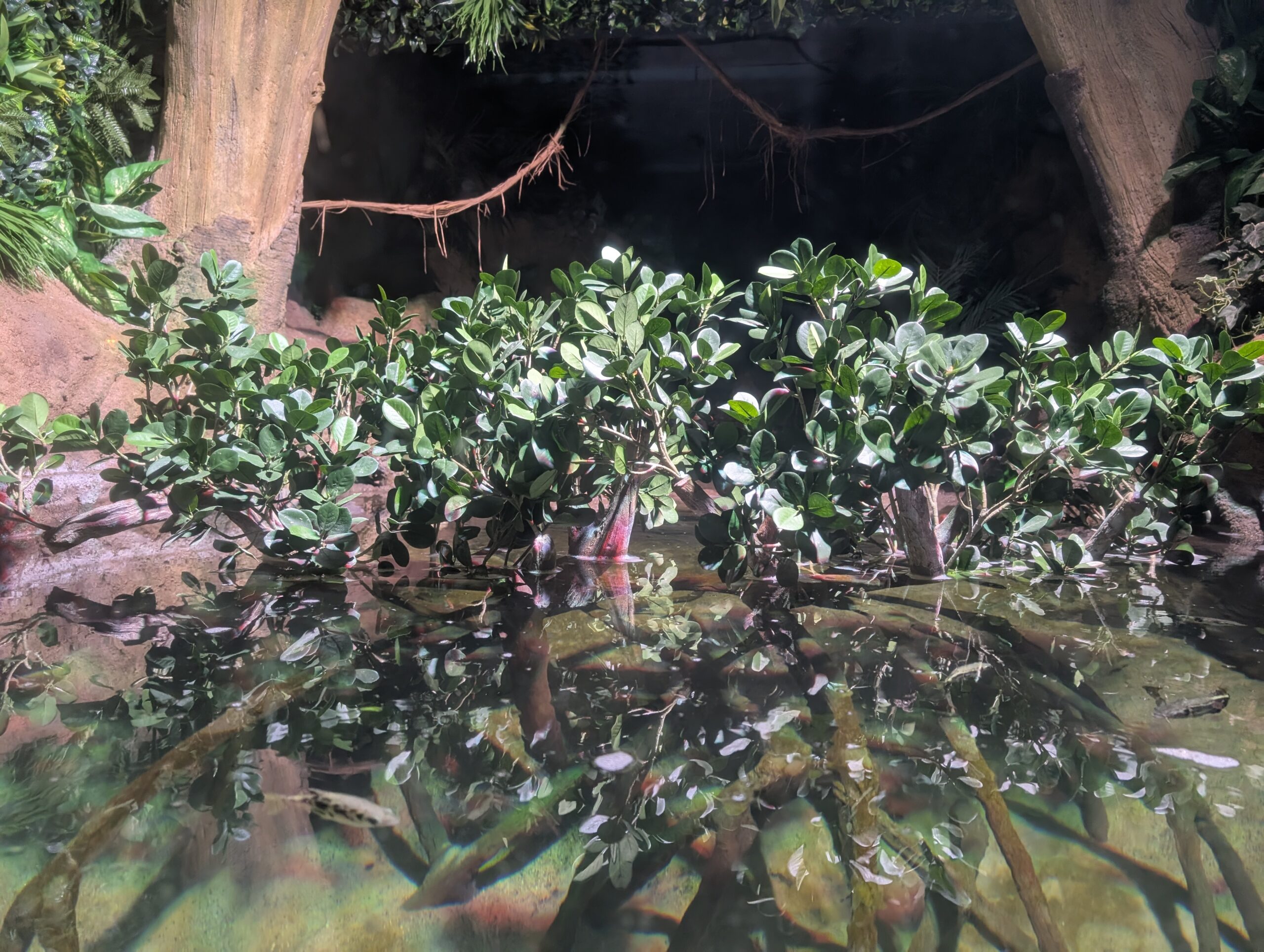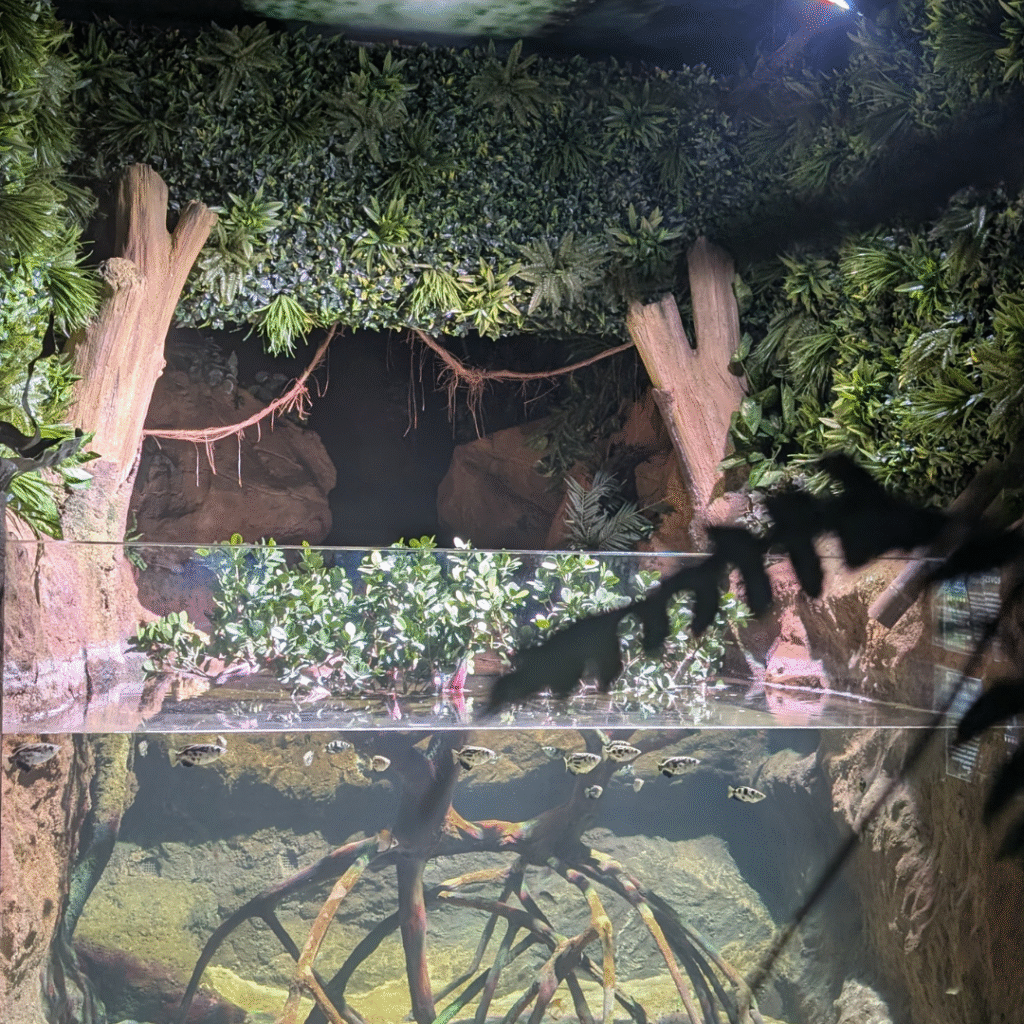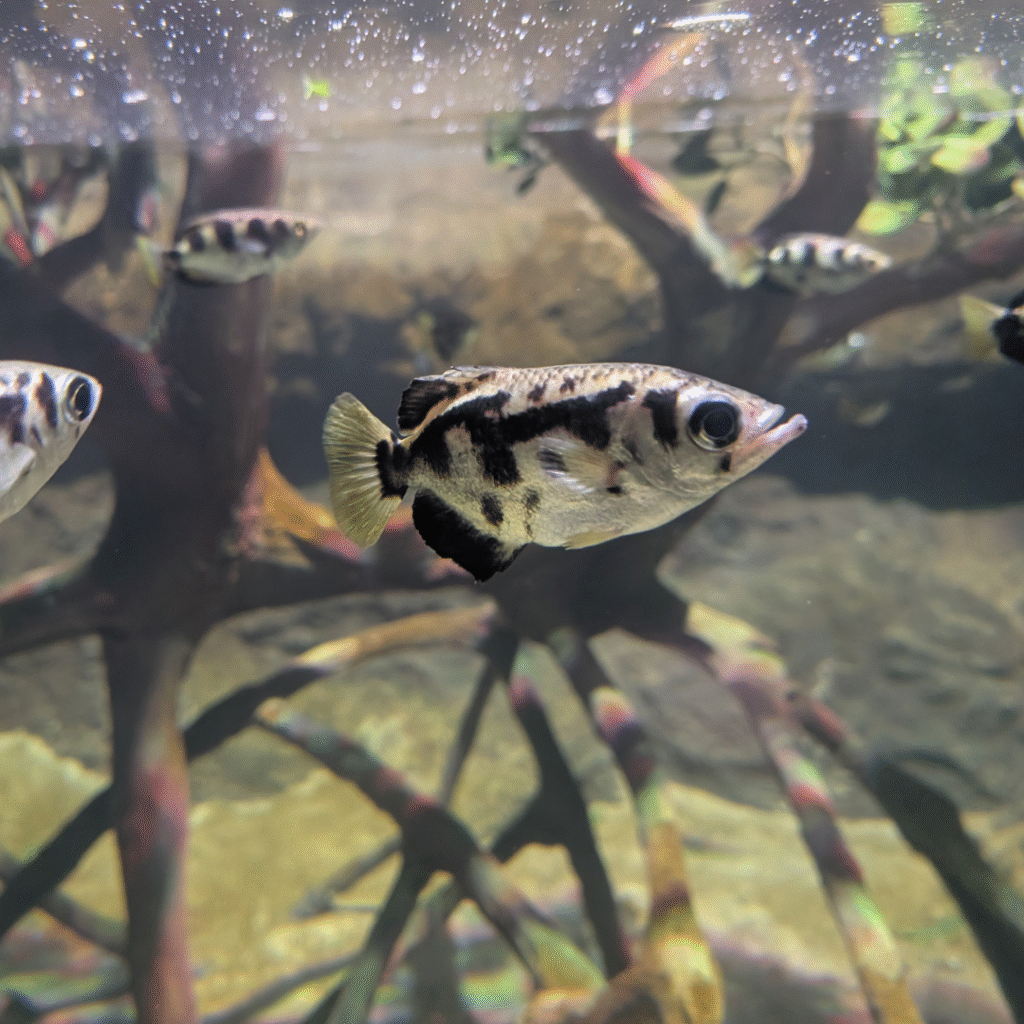
Where land meets sea, you’ll often find what’s called a mangrove teeming with exciting aquatic life. And with these environments circling the planet on our tropical and subtropical shores, we think it’s only right to educate our visitors about their importance and introduce you to some of the unique animals thriving here!
What is a mangrove?
The environment is centred around mangrove trees, with birds living in the treetops and aquatic creatures with unique adaptations living at the roots. The trees can survive exposure to saltwater and even with their roots submerged underwater.
In the wild, these habitats can be found on tropical and subtropical shores, lagoons and estuaries from North America to India. Almost a third of the world’s mangrove habitats are located in Southeast Asia alone.
The Mangrove Exhibit here at Deep Sea World contains a dynamic biotope showing off the importance of mangrove environments around the globe. We’ve replicated the habitat, including the submerged roots and access to saltwater that the trees and animals would have in the wild.
Importance of mangrove habitats
Mangrove habitats are unlike any other habitats in the world, and they exist for several environmental and ecological reasons. Understanding why they’re important can help us better protect them for the future and ensure they can keep benefitting the planet for many years to come.
As a biodiversity hotspot, mangroves are responsible for providing diverse and vast numbers of species with a home. They also act as a nursery, with the roots of mangrove trees being ideal for raising and providing for youngsters.
Another role of mangroves is to protect the coastline. These habitats provide a natural barrier against coastal damage from storm surges, erosion and even tsunamis because the tree roots can reduce wave energy.
Mangroves can help mitigate the effects of climate change, thanks to the trees being highly effective at capturing and storing carbon dioxide (blue carbon). They can store up to 4 times more carbon than tropical rainforests.
Finally, mangroves filter pollutants and trap sediments from land runoff, improving water quality and protecting coral reefs and seagrass beds.
Which animals will you see in our Mangrove Exhibit?
Ready to be introduced to the exciting creatures you can see in our Mangrove Exhibit? Here’s the line-up!
Banded archerfish
Banded archerfish (Toxotes jaculatrix), as their name suggests, are silver-coloured fish banded with darker patches across their bodies. They tend to live in brackish waters where saltwater meets freshwater, meaning that mangroves are their ideal habitats.
These fish also have the unique ability to spit a jet of water to attack their prey, which includes insects, spiders and other small fish.
Green spotted pufferfish
The green spotted pufferfish (Dichotomyctere nigroviridis) is commonly found in the fresh or brackish waters of Southeast Asia. Similar to other pufferfish species, this one has a rounded body and can inflate to make itself seem more intimidating to predators. These puffers can easily adapt to different water conditions, which is why they often set up their homes in mangroves.
Silver moony
Living in the Western Indo-Pacific, mono fish (Monodactylus argenteus) are known to inhabit the many mangrove environments in this part of the world alongside brackish water habitats. They’re often silver in colour with darker banding, which is why they’re sometimes called silver moony!
See for yourself!
Come along and check out our Mangrove Exhibit alongside the exciting species across our other exhibits on a fun-filled day out at Deep Sea World. Book your tickets in advance and start planning!
Current Water Temp
26°C / 68°FWater Type
Salt water
Climate / Biome
Tropical
In This Exhibit
3 species
Where are we?
Tropical & sub-tropical regions


